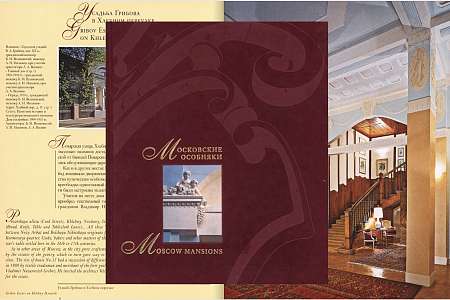





The name of the street – Povarskaya – is indicative of the profession of its inhabitants (cooks) in Moscow Rus epoch. At that time the Russian capital moved to Petersburg and the Povarskaya suburb was eliminated and the street became one of the most aristocratic streets in noble Moscow. Built up with columned single-storey houses painted in joyful colors (as recorded in historical oeuvre of that time), it was far from city fuss. The shops were not allowed here, the plates on the gates read "This is the house of chevalier such-and-such", and a sentry armed with a battle ax was protecting the chevaliers from common people.
In 1873 textile manufacturer and major benefactor Mitrofan Semenovich Grachev bought a plot of land here and after 12 years decided to build a house and ordered it to architect Petr Zykov. The client was notable for his original architectural tastes. For instance, his second residence, a country mansion in Khovrino, was built in the image and likeness to a Monte Carlo casino: Grachev was a successful roulette player. This Moscow mansion managed to avoid such architectural extravagance. Mr. Zykov confined himself to joining two structures in one, and adding dome roofing over the built-in part and an attic with flowerpots. His colleague, Georgy Kaiser, working at the house later, gave it a strict look, built an interior garden to the left part of the house.
It is worth noting that the association of benefactor Grachev and architect Kaiser was remarkably long and fruitful – this tandem owned former mansion of the Golovins in Khovrino, Saint Mitrofan church and orphanage in 2 Khutorskaya Street.
On the inside, Grachev's mansion was an example of then fashionable eclecticism, combining the elements of various styles characteristic for various epochs. There are a lot of unique elements and objects of the initial decoration which remained intact till now. In the front anteroom – stone floor of veneer pattern, a large mirror in a carved marble frame and original wardrobe settees. At the bottom of the staircase – a sculpture of Cupid and lion made by Italian master in the mid-19th century.
Cultural heritage site "Grachevs' Town Mansion, 19th century".
